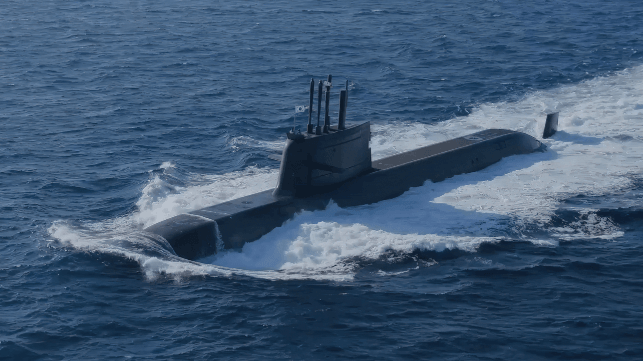Op-Ed: South Korea's Navy is Too Good to Leave Out of AUKUS

[By Jihoon Yu]
The members of AUKUS should expand the security pact to include South Korea. If they do, they will deepen and strengthen the partnership, enhance its technological capabilities and make the Indo-Pacific region more secure.
South Korea’s impressive record of indigenous military-technology development shows it would be a valuable addition to AUKUS, which is a technology-focused defense partnership between Australia, the United Kingdom and United States. Adding South Korea would enable the partnership to undertake more and harder development projects.
Inclusion of South Korea, with its strategically crucial location next to North Korea and China, would also help solidify the commitment of the United States to its Western Pacific allies and help present a united front against shared security challenges. And South Korea, in turn, would be bound closer to the AUKUS partners.
The ecosystem of South Korean military-technology development is led by the defense ministry’s Agency for Defense Development and includes skilled industrial partners such as Hanwah Defense, Korea Aerospace Industries and LIG Nex 1, and many capable engineers in the armed services.
Examples of South Korea’s achievements in defense technology are numerous. They reveal a capacity for defence engineering that greatly exceeds the ability of Australia and includes systems that even Britain does not develop.
The Republic of Korea Navy and its shipbuilders have developed a class of indigenous submarines following earlier construction based on German designs. The navy also operates destroyers of the Sejong the Great class that have been designed and built locally and incorporate the US Aegis system for air and missile defense.
A considerable capability that South Korea can bring to a defense partnership is the know-how for building warships quickly and economically. US Navy Secretary Carlos Del Toro remarked on this in April, saying he was ‘very interested in the skills and capabilities that South Korea brings to bear in shipbuilding’. He praised South Korean shipbuilders’ ability to produce ‘high-quality, mission-capable ships at a remarkable pace and cost.’
South Korea has invested heavily in building a robust cyber defence infrastructure, as shown by its establishment of a National Cyber Security Center and its implementation of comprehensive national cyber exercises. Extensive work is underway on artificial intelligence and robotics. For example, the country has developed the AI-powered surveillance system S-Goalkeeper to protect against cyber threats.
Hanwha Defense is advancing robotic systems, such as the Multi-purpose Unmanned Ground Vehicle for reconnaissance and combat support.
The Korean Air and Missile Defense (KAMD) system—comprising surface-to-air systems such as the KM-SAM, L-SAM and the US Patriot for dealing with threats of various types and at various altitudes—is indigenously designed, showing that South Korea can tackle some of the greatest challenges in military engineering. The country has also developed its own cruise and ballistic missiles.
Military technology development in AUKUS can be expected to have economic benefits, particularly through innovation and spillover effects, such as promoting growth in semiconductor and materials industries. Adding South Korea would increase those benefits. The country is a global leader in semiconductor manufacturing. Also, its extensive manufacturing capability would greatly improve the reliability of AUKUS’s supply chains.
South Korea is too strong a force in military-technology development for AUKUS to overlook. Adding it to the security partnership would also bolster stability in East Asia.
Jihoon Yu is a research fellow at the Korea Institute for Defense Analyses and was the main author of a 2010 policy document for the South Korean navy’s development up to 2045. He was also a member of task forces that studied plans for aircraft carrier and submarine acquisition.
This article appears courtesy of The Strategist and may be found in its original form here.
The opinions expressed herein are the author's and not necessarily those of The Maritime Executive.
No comments:
Post a Comment